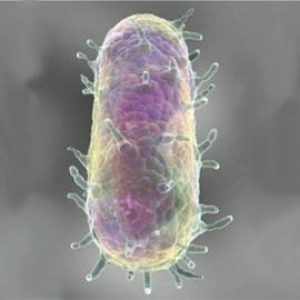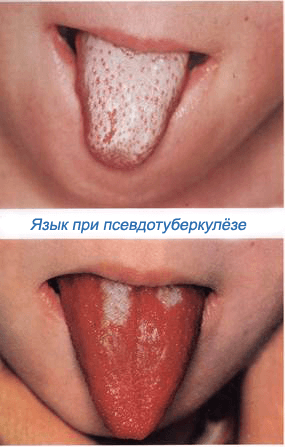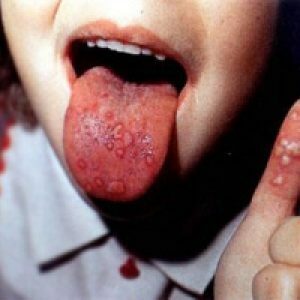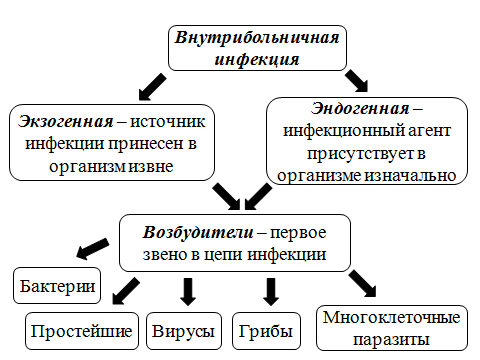Pseudotuberculosis: symptoms, diagnosis, treatment in children and adults

Pseudotuberculosis is an acute infectious disease that affects the gastrointestinal tract, musculoskeletal system and skin. Despite the loud name, the ailment has nothing to do with Koch's wand, which provokes the development of tuberculosis.It simply leads to the appearance of morphological changes in organs that are similar to tuberculosis. General information General information Pseudotuberculosis, mesenteric lymphadenitis, Far Eastern scarlet fever-these and other names describe the same condition, In which a person has a rash, intoxication, chills and fever.Meanwhile, it is most appropriate to call the disease iersiniosis.This is due to the fact that its causative agent is the E. coli of the genus Yersinia. For the first time, pseudotuberculosis was started in 1883, when its pathogen was discovered, but the first patient who was diagnosed with it came to the doctor only in 1953. At that time, physicians already knew that the anaerobes caused the disease, which are also characterized by the following symptoms: Important! Pseudotuberculosis is transmitted by the fecal-oral route.In other words, infection occurs through contact with food that was in the soil, which has become the habitat for pathogens. You can get sick with pseudotuberculosis by using: People with pseudotuberculosis are subject to ubiquity.Moreover, it can occur at any time of the year, although outbreaks are most often recorded between February and March. In the risk group - children and adolescents under the age of 17 living in cities and abusing food from street cafes and fast foods.From time to time, the disease is diagnosed in people eating in canteens, children in kindergartens, schools, pioneer camps. Please note! There are cases when the causative agent of pseudotuberculosis gets into the blood, beginning to actively reproduce in it.As a result, bacteremia was fixed, due to which the general picture of the disease was lubricated.The fact is that through the blood the infection enters various organs and systems, causing lesions of the lungs, spleen, liver, brain membranes.Most often, abscesses, dystrophic changes, inflammations of various kinds. After entering the body, some of the pathogens die, but at the same time secrete endotoxin.Instead of the desired relief, intoxication occurs. As a result, a person manifests: hives, Quincke's edema, arthritis, myocarditis, systemic diseases, for example, lupus erythematosus or periarteritis. Brightly expressed symptoms of pseudotuberculosis appear in people with weakened immunity and in children, while holders of strong immunity often suffer from a disease without its characteristic manifestations. Most often, patients are noted: Important! On this basis, enterocolitis, gastroenterocolitis or gastroenteritis may develop.Autoimmune processes in turn provoke the appearance of arthritis, myocarditis, and Reiter's syndrome. The incubation period for pseudotuberculosis is stretched for 18 days, although the first signs of an ailment are already visible on the 5th-7th day, when a person's body temperature rises sharply to 38C-40C degrees.It is interesting that it can last from 10 to 30 days in especially neglected cases. Physicians distinguish between several forms of the disease, depending on the prevailing symptom and infection location: Important! Unlike adults, children have a long incubation period that can last for 30 days.All this time, there may be prodromal symptoms, nonspecific for pseudotuberculosis, which often mislead a doctor, involuntarily forcing him to diagnose a banal respiratory infection. Meanwhile, with the appearance of redness and peeling in the face and neck area, as well as severe diarrhea with bloody liquid stool, jaundice and liver enlargement, doubts in the development of pseudotuberculosis are usually eliminated. In the case of childhood morbidity, doctors often diagnose typical and atypical forms of the disease, which entail the blurring of the picture.They also differ in the duration and severity of the condition.So the acute form can annoy a child up to 30 days, prolonged - up to 3 months, and chronic - more than 3 months. Please note! Some children have a cold on the background of pseudotuberculosis, cough, reddening of the throat, redness of the conjunctiva of the eyes, widening of the vessels on the sclera, herpes on the lips and wings of the nose.All this is accompanied by weakness, loss of appetite, headaches, and also high fever, which does not get off even antipyretic and lasts about 7 days. On the 3rd - 4th day, there is a rash of a different nature, which does not go off for about a week, after which it is replaced by ecdysis.Signs of pseudotuberculosis in this period - redness in the face and neck - a symptom of "hood", hands and feet - a symptom of "gloves and socks."Subsequently, the rash manifests itself in the groin, on the sides, on the bends of the extremities. Also in children with pseudotuberculosis there is: These symptoms are characteristic of the gastrointestinal form of the disease when the small intestine or stomach is affected. In case of development of a hepatitis, or icteric form, there are: Atypical form of pseudotuberculosis can be erased when the signs of the disease are poorly expressed, and latent, when immunological reactions are fixed in the body in the absence of any clinical manifestations. For the diagnosis, the doctor examines the child and also assigns laboratory tests: The treatment of pseudotuberculosis is most often performed in a hospital .In severe cases, a strict bed rest is prescribed until the fever disappears. Therapy is of a complex nature.The patient is prescribed: Important! The diet should be observed for 30 to 45 days, even after all symptoms have disappeared. Despite the insidiousness of the disease, the predictions, even in children, are favorable provided that the doctor is contacted in a timely manner.Already 3 weeks after the beginning of treatment, a complete recovery is achieved. Any procrastination and disregard for the symptoms are fraught with complications: In severe cases, permanent relapse and death may occur. Vaccination against pseudotuberculosis does not exist, therefore prevention is reduced to: Please note! In order to avoid contamination when eating fresh fruits and vegetables, the fruits must be pre-emptied with boiling water. Pseudotuberculosis is a dangerous disease that is sometimes difficult to diagnose due to unexpressed symptoms or symptoms similar to those of other diseases.At the same time, the ailment can cause serious complications up to a lethal outcome.Therefore, in case of suspicion of pseudotuberculosis, you should immediately consult a doctor and begin treatment immediately. Elena Sovinskaya, doctor, medical reviewer
Reasons
 As a result of the studies it was found that the vectors of the disease are animals.These are rodents, small and large cattle, poultry, rabbits, horses, cats, dogs.In addition, swine can act as a source of infection, while at the same time a sick person for the environment is not dangerous.
As a result of the studies it was found that the vectors of the disease are animals.These are rodents, small and large cattle, poultry, rabbits, horses, cats, dogs.In addition, swine can act as a source of infection, while at the same time a sick person for the environment is not dangerous.
Pathways of infection
 The human body, along with food and drink, gets the infection through the oral cavity.Then she goes to the intestines, catching up with the lymphoid formations.Here, active reproduction occurs, after which, through the lymphatic pathways, the pathogen enters the mesenteric lymph nodes.
The human body, along with food and drink, gets the infection through the oral cavity.Then she goes to the intestines, catching up with the lymphoid formations.Here, active reproduction occurs, after which, through the lymphatic pathways, the pathogen enters the mesenteric lymph nodes. Symptoms of pseudotuberculosis
 diarrhea with an abundant and watery stool and abdominal pain due to the causative agent in the blind or large intestine, and the development of inflammations that can at best turn into bleeding sores, and inThe worst - provoking tissue necrosis;
diarrhea with an abundant and watery stool and abdominal pain due to the causative agent in the blind or large intestine, and the development of inflammations that can at best turn into bleeding sores, and inThe worst - provoking tissue necrosis;
 Gastrointestinal - people without medical education can confuse it with ordinary poisoning, since it manifests itself in a similar way.A person has a high fever, chills, body aches and apathy.True, they are eventually added to insomnia, cough and sore throat, burning or flaring in the feet and palms, a small point rash, which after a couple of days gives way to scaling.On admission, the specialist will also be diagnosed with an increase in the spleen and liver.In children, jaundice and dark urine may appear.In the absence of timely treatment, the CNS is sometimes affected, which can eventually result in meningitis.
Gastrointestinal - people without medical education can confuse it with ordinary poisoning, since it manifests itself in a similar way.A person has a high fever, chills, body aches and apathy.True, they are eventually added to insomnia, cough and sore throat, burning or flaring in the feet and palms, a small point rash, which after a couple of days gives way to scaling.On admission, the specialist will also be diagnosed with an increase in the spleen and liver.In children, jaundice and dark urine may appear.In the absence of timely treatment, the CNS is sometimes affected, which can eventually result in meningitis. Peculiarities of pseudotuberculosis in children
 Unwashed hands and food, and games in the sandbox are the most common causes of the onset of the disease in children.In this case, the pathogen enters through the oral cavity into the gastrointestinal tract, but actively multiplies in the lymph nodes of the mesentery.In the risk group are children aged .At an earlier age, they are relatively safe because of breastfeeding, which clearly regulates the child's diet.
Unwashed hands and food, and games in the sandbox are the most common causes of the onset of the disease in children.In this case, the pathogen enters through the oral cavity into the gastrointestinal tract, but actively multiplies in the lymph nodes of the mesentery.In the risk group are children aged .At an earlier age, they are relatively safe because of breastfeeding, which clearly regulates the child's diet.
Diagnosis of pseudotuberculosis
 Bacteriological - analysis of feces, blood, flushing from the nasopharynx, cerebrospinal fluid and sputum.Crops are done three times in the first week before the start of therapy, but the results are usually prepared 2 to 3 weeks.
Bacteriological - analysis of feces, blood, flushing from the nasopharynx, cerebrospinal fluid and sputum.Crops are done three times in the first week before the start of therapy, but the results are usually prepared 2 to 3 weeks. Treatment of pseudotuberculosis
Forecast
Prophylaxis



